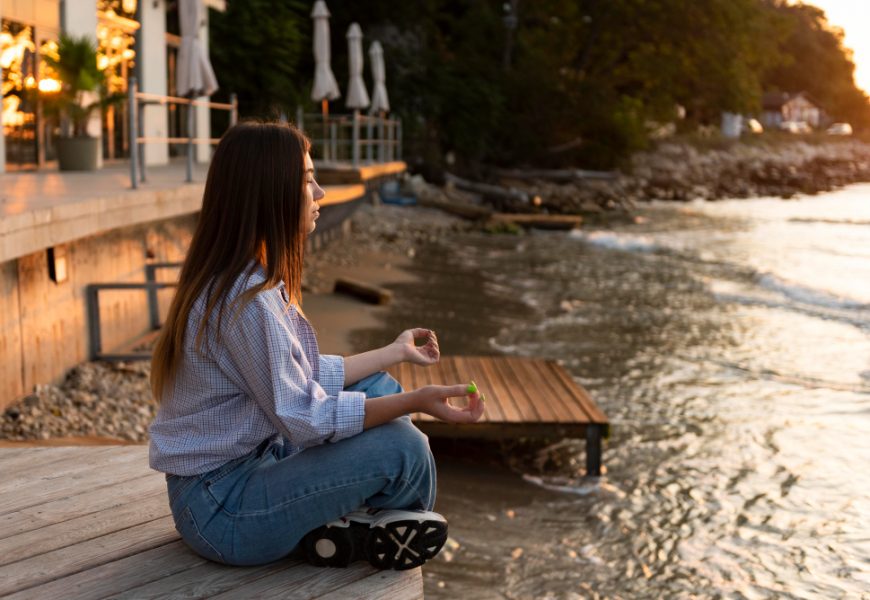In a world that celebrates busyness as a badge of honor, where the worth of a person is often measured by productivity and output, a quiet revolution is unfolding. The slow living movement—rooted in mindfulness, intentionality, and balance—has become a refreshing countercurrent to the chaos of modern life. It’s not merely about doing things more slowly, but about reimagining how we live, work, connect, and rest. People across generations are beginning to question what it truly means to live well, and in doing so, they are stepping away from over-scheduling, constant connectivity, and the endless pursuit of more.
The modern obsession with speed stems from a culture of comparison and competition. Technology enables us to do everything faster: send an email in seconds, receive instant updates, access limitless entertainment. Yet, paradoxically, this constant acceleration often leaves us more exhausted and disconnected. Slow living enters as an antidote—a philosophy that invites us to pause, engage our senses, and appreciate the richness of the present moment.
The growing interest in this lifestyle suggests a cultural metamorphosis. Young professionals are leaving high-pressure jobs in favor of meaningful work; families are trading convenience for connection by cooking together instead of ordering takeout; communities are rediscovering local craftsmanship and sustainability. Success is being redefined—not by titles or possessions, but by emotional well-being, purposeful relationships, and personal fulfillment.
Slow living is not about rejecting modernity—it’s about using it consciously. It means choosing presence over multitasking, depth over surface interactions, and authenticity over perfection. It’s a reminder that life is not a race to be won, but an experience to be lived with awareness. This subtle rebellion against haste is, at its heart, a yearning for balance—a movement toward emotional sustainability in a time when mental burnout has become a global epidemic.
The rise of the slow living culture is not a fleeting trend—it reflects a deeper reorientation of values. On a personal level, it represents a response to burnout, anxiety, and the emptiness that often follows relentless achievement. Many are learning that chasing external success can come at the cost of inner peace. The slow living philosophy encourages people to reclaim their time—to rest without guilt, to listen inwardly, and to realign their daily rhythms with their mental and emotional needs.
This movement also mirrors changing societal priorities. Digital fatigue and information overload have reached critical levels, prompting a collective desire to disconnect from screens and reconnect with tangible experiences. People are beginning to see that true connection doesn’t come from constant online engagement, but from shared presence—conversations without distraction, meals shared without checking notifications, and communities built on support rather than competition.
Environmental consciousness is another pillar of slow living. The culture of rush has fed overconsumption—fast fashion, single-use products, and disposable habits that strain the planet. Slow living instead champions sustainability through mindful choices: buying less but better, valuing local and handmade goods, growing food at home, and choosing experiences over possessions. The shift toward simplicity naturally fosters ecological awareness, as living slowly often means living more harmoniously with the Earth.
Purposeful work is another cornerstone of this philosophy. Rather than defining success purely through career advancement or financial metrics, slow living asks: Is what I’m doing meaningful? Does it align with my values? For many, this introspection has led to career transitions—toward creative fields, small business ventures, or remote work that allows more time for family and personal growth. Work-life balance, once dismissed as a dream, is being reclaimed as a non-negotiable part of well-being.
Restorative routines are central, too. Instead of overwhelming schedules, people are incorporating practices that center calm—unhurried mornings, time in nature, journaling, stretching, or simply sitting quietly with a cup of tea. These small rituals create space for reflection and gratitude, allowing the day to unfold with purpose rather than pressure.
Authentic relationships thrive in this slower rhythm. When life moves at a gentler pace, there’s more room for empathy, patience, and genuine connection. Friendships deepen, family ties strengthen, and communities grow more supportive. People begin to see that the quality of their days—measured in laughter, peace, and love—is far more rewarding than the quantity of their accomplishments.
Ultimately, the culture of slow living is about reclaiming ownership of our time and attention. It invites us to ask what truly matters and to live accordingly. It challenges the narrative that faster is always better, and in doing so, it empowers us to rediscover joy in simplicity, clarity in stillness, and meaning in the ordinary moments of daily life.
In embracing calm over rush, humanity is not regressing—it’s returning. Returning to balance, presence, and the quiet wisdom of living well.









